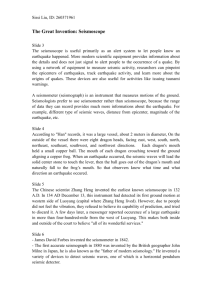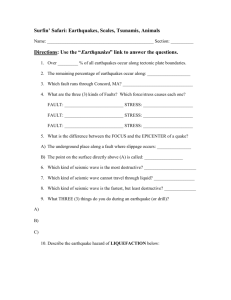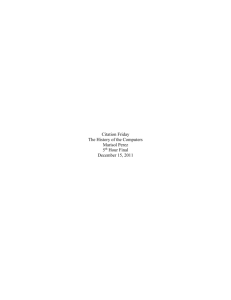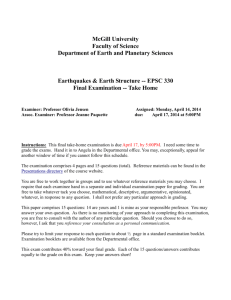sissi's presentation..
advertisement
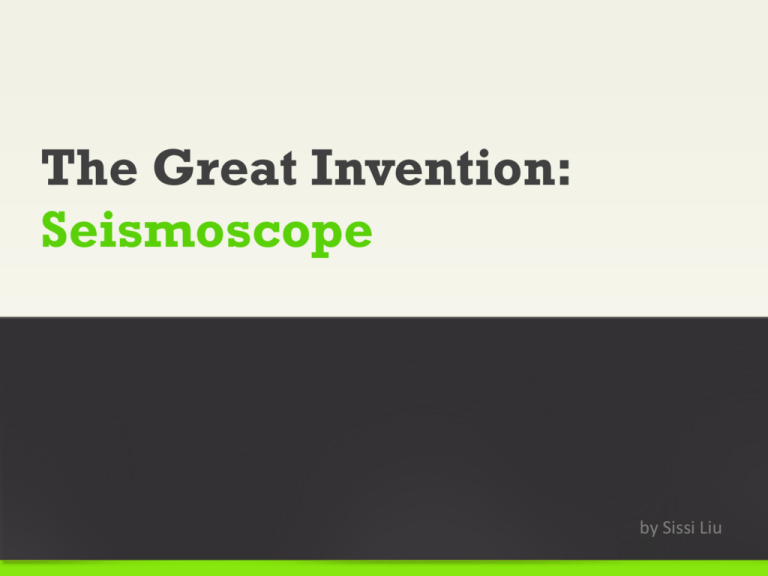
The Great Invention: Seismoscope by Sissi Liu Presentation Outline What is a seismoscope? How does it work? Invention and Technology • An animation shows the procedure of how does it detect an Earthquake. • Earliest seismoscope • Moderm inventions [seismocope vs seismometer] • The differences between a seismometer and a seismoscope. 1 of 6 What is a seismoscope? [Seismoscope VS Seismometer] A seismoscope is a simple instrument that detects the occurrence of an earthquake, likely providing information about the direction and timing of the quake as well. The seismoscope is not a seismometer, they are different in the way of their result. 2 A seismometer (seismograph) is an instrument that measures motions of the ground. Seismologists prefer to use seismometer rather than seismoscope, because the range of data they can record provides much more informations about the earthquake. For example, different type of seismic waves, distance from epicenter, magnitude of the earthquake, etc. of 6 How does a Seismoscope work? http://www.estium-concept.com/en/computer_graphics-geology_seismoscope.htm 3 of 6 Invention and Technology EARLIEST SEISMOSCOPE The Chinese scientist Zhang Heng invented the earliest known seismoscope in 132 A.D. In 134 AD December 13, this instrument had detected its first ground motion indicating an earthquake will occur at western side of Luoyang (capital where Zhang Heng lived). However, due to people did not feel the vibration, they refused to believe its capability of prediction, and tried to discard it. A few days later, a messenger reported a large earthquake had occured at more than four-hundredmile away from the west of Luoyang. This made both inside and outside of the court to believe "all of its wonderful services." 4 of 6 Invention and Technology MODERN INVENTIONS • James David Forbes invented the seismometer in 1842. • The first accurate seismograph in 1880 was invented by the British geographer John Milne in Japan, he is also known as the "father of modern seismology." He invented a variety of devices to detect seismic waves, one of which is a horizontal pendulum seismic detector. 5 of 6 REFERENCES 1.http://inventors.about.com/library/inventors/blseism ograph5.htm 2.http://inventors.about.com/library/inventors/blseism ograph4.htm 3. http://en.wikipedia.org/wiki/Seismometer 4. Sleeswyk AW, Sivin N (1983). "Dragons and toads: the Chinese seismoscope of BC. 132". Chinese Science 6: 1– 19. 6 of 6 THANKS FOR LISTENING~ by Sissi Liu
